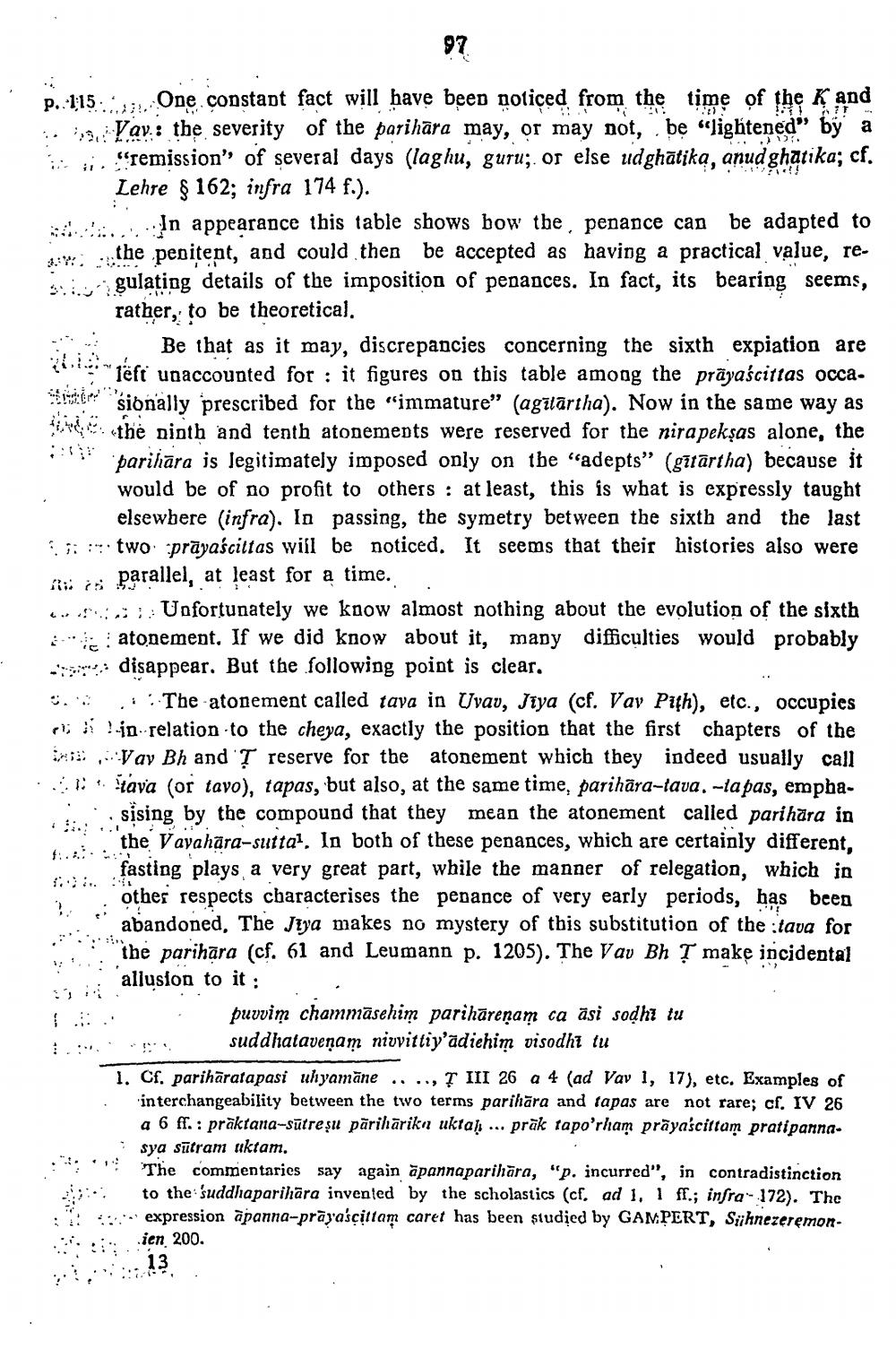________________
97
20:
p. 115. One constant fact will have been noticed from the time of the K and Vav: the severity of the parihara may, or may not, be "lightened" by a ... "remission" of several days (laghu, guru; or else udghātika, anudghatika; cf. Lehre § 162; infra 174 f.).
In appearance this table shows bow the, penance can be adapted to the penitent, and could then be accepted as having a practical value, regulating details of the imposition of penances. In fact, its bearing seems, rather, to be theoretical.
Be that as it may, discrepancies concerning the sixth expiation are
tiger
sionally prescribed for the "immature" (agilartha). Now in the same way as the ninth and tenth atonements were reserved for the nirapeksas alone, the parihara is legitimately imposed only on the "adepts" (gitartha) because it would be of no profit to others at least, this is what is expressly taught elsewhere (infra). In passing, the symetry between the sixth and the last two prayaścittas will be noticed. It seems that their histories also were parallel, at least for a time.
ww.
... Unfortunately we know almost nothing about the evolution of the sixth atonement. If we did know about it, many difficulties would probably - disappear. But the following point is clear.
3. B
44
2.
The atonement called tava in Uvau, Jiya (cf. Vav Pith), etc., occupies in relation to the cheya, exactly the position that the first chapters of the Vay Bh and T reserve for the atonement which they indeed usually call ava (or tavo), tapas, but also, at the same time, parihāra-tava. -tapas, emphasising by the compound that they mean the atonement called parihara in the Vavahara-sutta1. In both of these penances, which are certainly different, fasting plays a very great part, while the manner of relegation, which in other respects characterises the penance of very early periods, has been abandoned, The Jiya makes no mystery of this substitution of the tava for the parihara (cf. 61 and Leumann p. 1205). The Vav Bh T make incidental allusion to it:
MIF
#
1. Cf. pariharatapasi uhyamāne .., III 26 a 4 (ad Vav 1, 17), etc. Examples of interchangeability between the two terms parihara and tapas are not rare; cf. IV 26 a 6 ff.: praktana-sūtreşu pärihārika uktaḥ ... prak tapo'rham praya'scittam pratipannasya sutram uktam.
The commentaries say again apannaparihara, "p. incurred", in contradistinction to the suddhaparihara invented by the scholastics (cf. ad 1, 1 ff.; infra- 172). The expression apanna-prayaścittam caret has been studied by GAMPERT, Sühnezeremon
.ien 200.
13
puvvim chammasehim parihāreṇam ca asi soḍhi tu suddhatavenam nivvittiy'ädiehim visodhi tu
--




